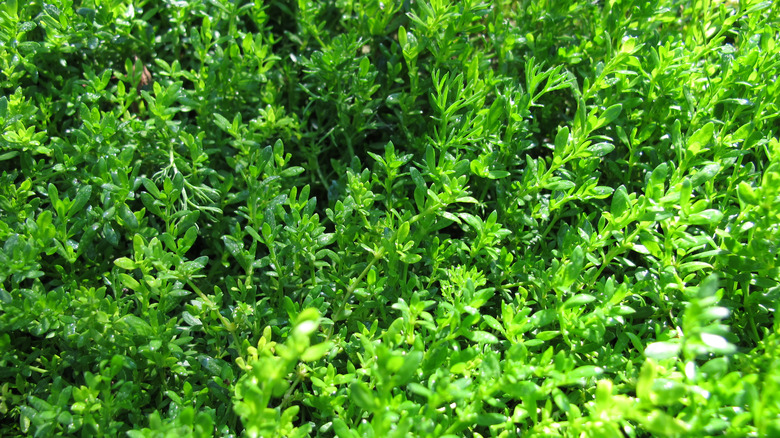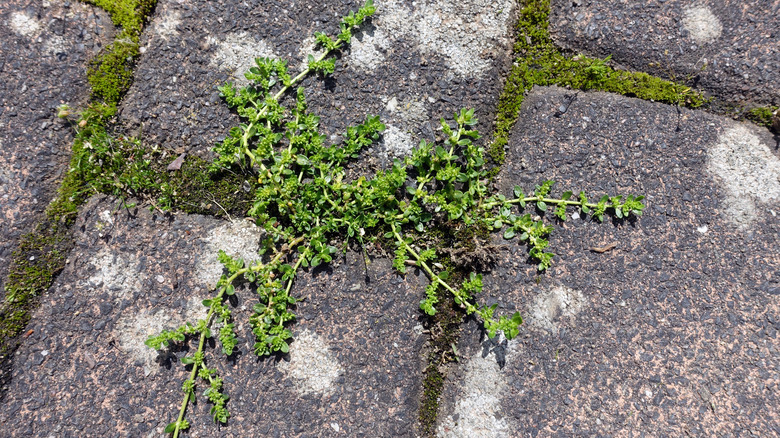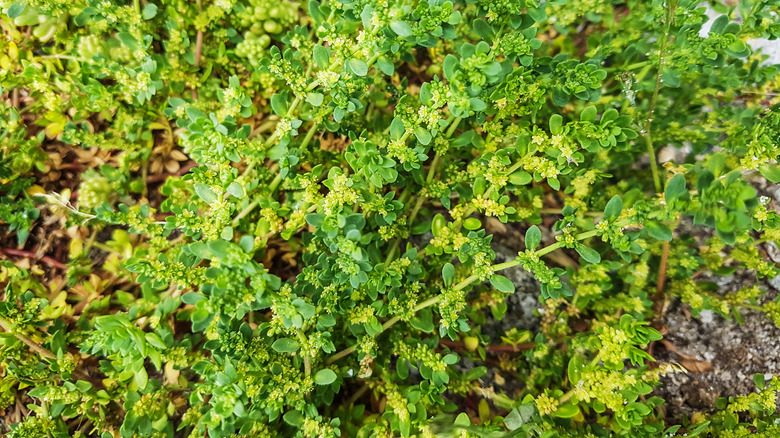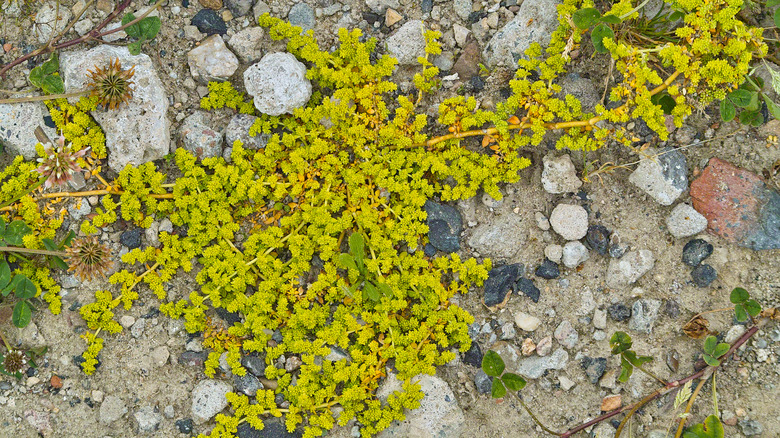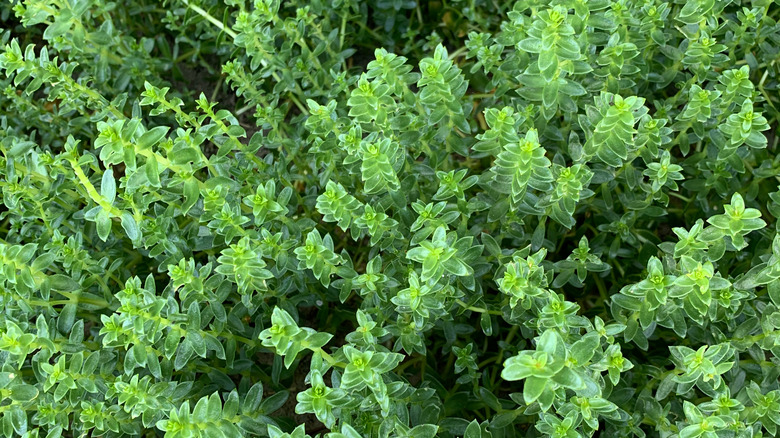How To Care For A Green Carpet Plant
Herniaria glabra, also known as green carpet plant or rupturewort, is a low-maintenance, low-growing, ground-covering herbaceous perennial, as described by The Spruce. Native to some parts of Asia and Europe, this plant has most often been used for ground cover over nutrient-poor soil, which is how it got its common name. The green carpet plant spreads on its own, without the gardener's help. It requires little attention and is great at preventing weeds.
This no-fuss plant is characterized by its vibrant green foliage, growing to a height of 3 inches, with many, small oval-shaped leaves. In the fall and winter, green carpet plant's leaves can turn a red or orange color, making lawns extra-festive for the holidays. Sometimes, during the growing season, small greenish-white flowers will appear, but they don't attract bees, as per Outside Pride. Each green carpet plant has taproots that grow horizontally, forcing the plant to spread up to 2 feet wide. The taproots are also the reason for the plant's drought tolerance and circular growing habit. Keep scrolling for all you need to know about growing and caring for a green carpet plant.
How to use green carpet plant in garden
Green carpet plants are grown almost exclusively as ground cover in a garden. They are cold-hardy plants that can be grown in most parts of the United States, specifically thriving in USDA hardiness zones 5 through 9, according to Perennials.com. You can plant them anywhere in your yard that you see fit. They are tolerant of a lot of foot traffic, so you can fill your lawn with it or just make a small path.
Some gardeners choose to grow their green carpet plants between flagstones, in carpet bedding schemes, or as path edging. Because this ground covering perennial is deer resistant, others choose to use it as a border plant around their garden beds to deter pesky animals. Growing green carpet plant in containers indoors or outdoors is possible as well. It looks lovely draped over the sides of large pots that also contain one or more upright plants, as explained by The Spruce.
How to grow green carpet plant
Herniaria glabra is most often grown from seeds, but it can also be propagated through division or simply bought pre-grown from a local nursery. To start growing green carpet plant from seeds, you'll need well-draining potting soil, one or more shallow trays, and the seeds themselves, explains Outside Pride. Fill your trays with soil in the fall. Then, sprinkle the seeds on top of the dirt but do not cover them. Make sure the seeds don't dry out by regularly misting or bottom-watering the trays. When the plants have had the chance to mature through the end of winter, you may transplant them into your garden in the spring.
If you want to propagate a green carpet plant through division, start the process by gathering a sterile knife and fresh potting soil. This perennial will need to be dug up from your garden or unpotted from its container before you can get to work. Shake out the excess dirt from the green carpet plant's roots, exposing the taproots. Divide sections as best as you can with your hands, or cut them apart with the knife, taking care not to crush any stems, as per Lowes. While working the plant apart, ensure that each section has good roots and plenty of stems. Once you are satisfied with the division process, immediately repot your green carpet plant and water it thoroughly.
How to care for green carpet plant
After planting green carpet plant, it is extremely easy to care for. It prefers full sunlight, but will also do just fine in partial shade, says Gardeners HQ. That being said, you should avoid full shade as it can be problematic for the health of this plant. Keep in mind that fertilization is mostly unnecessary. You can help the plant grow faster with some light feeding in the spring, according to Gardening Know How; however, once it reaches adulthood, it will spread just fine without any help.
Luckily, you should not have to impose a watering schedule if you decide to begin growing this plant. As mentioned above, it is incredibly tough and drought-tolerant. Its long taproots store water to supply to the rest of the plant during dry spells. When planted outdoors, rainwater alone should be enough to keep your green carpet plant thriving, points out The Spruce. If you live in a hot climate, you may need to give it a long drink on occasion during the summer to keep it happy, but no more than that.
How to transplant green carpet plant
Often, green carpet plants need to be transplanted when they become overgrown. The process is relatively simple and can go a long way to make this plant happier and healthier. Outside Pride suggests transplanting your green carpet plant in the spring after the last frost. The site also recommends allowing younger sprouts to harden before beginning the transplant process. Simply place trays of Herniaria glabra outdoors in a protected area for about two weeks to reduce the possibility of shock.
When you are ready to transplant, SFGate lets us know that you should first clear the soil where you plan to relocate your plants. Get rid of any weeds, large rocks, and debris. Then loosen the dirt with a small shovel and dig a few holes. When the spot is sufficiently prepared, take your plants out of their trays or dig up a small section of them from your yard. Keep as many of the roots intact as you can. Place the green carpet plants into the prepared holes, making sure all the roots are covered by soil. Firm the dirt around the base of each plant to secure it in its new home. You can also spread some mulch around your green carpet plants to help them retain moisture and keep them warm while they find their footing.
